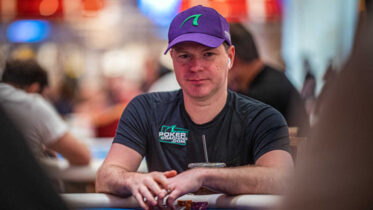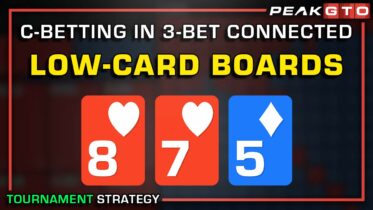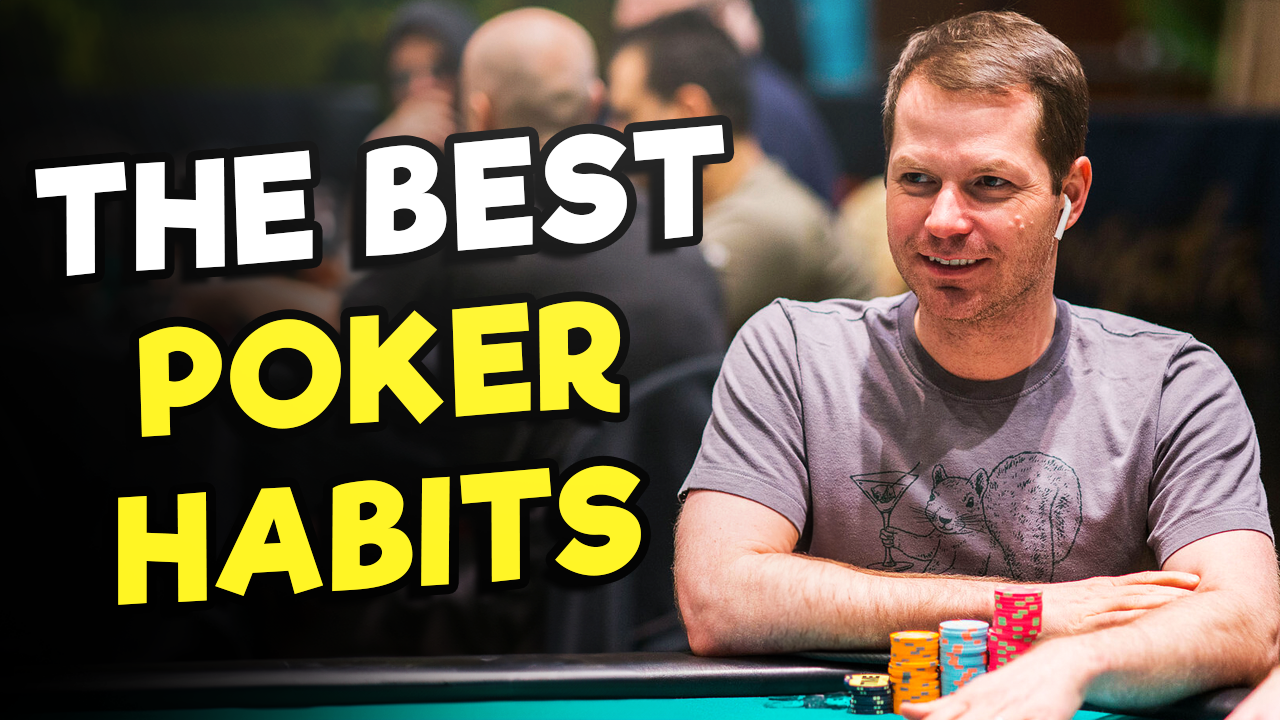Big O poker is a variation of Omaha poker that’s played with five hole cards and the hi/lo principal in play. The full name of the game is Five Card Pot Limit Omaha Hi-Lo 8 or Better, but the game is most commonly referred to as Big O.
If you have ever played Pot Limit Omaha Hi-Lo, you will already understand all the basic rules of Big O but will need to make some adjustments.
On the other hand, if you have only ever played PLO, or even just Texas Hold’em, this guide to Big O poker will teach you everything you need to go from the ground up.
We will teach you everything about dealing the cards, making bets, splitting the pot, and the basic strategy you need to know before you play Big O.
Basic Rules of Big O Poker
Before you can understand all the intricacies of Big O poker, it is important to get a good grasp on the basic rules of the game and its objective.
Big O poker is played with a standard 52-card deck of playing cards, with each player dealt a total of five hole cards, along with five community cards that all players can use to make the best hand.
Much like in Texas Hold’em Poker or Pot Limit Omaha, players take turns making bets on their hands across four betting streets – preflop, flop, turn, and river.
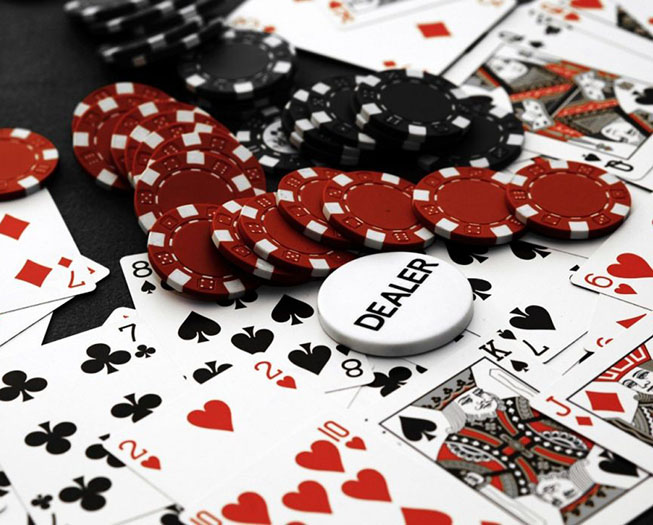
Unlike these games, Big O is a split pot game akin to PLO8, which means that each pot is split into two halves if a hand goes to showdown and a qualifying low hand is made.
Players can use any combination of two hole cards and three community cards to make their high hand, as well as any combination of two hole cards and three community cards to make their low hand.
It is important to understand that a low hand can only be made of cards lower than a nine and that pairs don’t qualify for the low part of the hand. The exact explanation of how the Lo works in Big O will be presented below after we explain the more basic elements of the game.
For starters, let’s look at how dealing and betting streets work in Big O poker and how each hand flows from the moment the first card is dealt to the showdown.
Dealing & Betting Streets in Big O Poker
A game of Big O poker starts with players seated at the table and the dealer randomly assigning the dealer button to one of them by dealing one card to each player. The player with the highest card wins the button.
Once the dealer button is set, the table has the same poker positions you are familiar with from Texas Hold’em or PLO. The two players to the left of the dealer must post the small blind and the big blind, the two mandatory bets that get the action started.
The dealer then shuffles the deck and deals the first hand, with the player in the small blind receiving the first hole card and the player on the dealer button receiving the last.
Once all players have exactly five hole cards, the player to the left of the big blind starts the action, and the action continues clockwise until all players have acted on their hand.
In total, the hand of Big O is made up of four betting streets:
- Preflop: The preflop betting round starts once all players have received their hole cards. The action starts with the UTG player and continues clockwise to the big blind. All players can make raises up to the size of the pot (pot limit).
- Flop: Once all players have acted on their hands preflop, the dealer burns one card and deals the first three community cards called the flop. The action starts with the small blind, and all players get to act on their hands at least once before the next card is dealt.
- Turn: Following flop action, the dealer burns a card and deals the fourth community card, called the turn. Once again, all players get to act on their hands in the same order as on the flop.
- River: The last community card, called the river, is dealt after all players have acted on the turn. For one last time, players can make bets and raises up to the size of the pot before the showdown is announced.
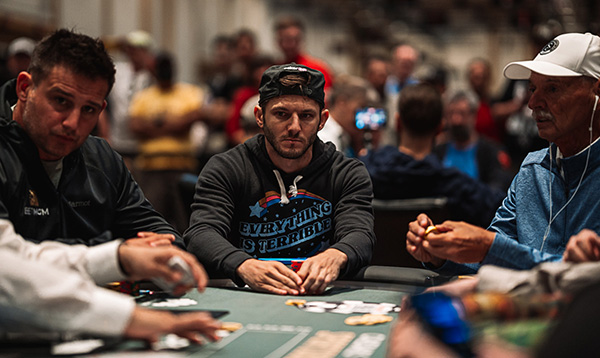
Following river betting, the dealer announces a showdown, and all players who still have hole cards are asked to turn them over. The dealer examines the hole cards and determines the winner of the high and the low portion of the pot in accordance with the Big O poker hand rankings.
It is worth noting that while a high hand is declared on every showdown, a low hand does not have to be. In fact, if there aren’t at least three unpaired community cards lower than a nine out there, the low hand cannot exist.
Player Actions in Big O Poker
While the objective of Big O poker is to make the best high and low hand, you can also win the hand before showdown if all other players fold their cards and you are the only one left with hole cards.
Additionally, the betting rounds allow you to make bets and raises in order to extract value for your hand and charge other players trying to draw to a better hand. Betting also allows you to bluff other players out of the pot by representing a better hand than you actually have.
Here are all the betting actions you can take throughout the different betting rounds:
- Fold: Throw away your hole cards and take no further part in the hand. You will not be asked to put any further chips into the pot and will not be able to win the pot.
- Call: Match the size of the active bet in order to stay in the hand. Whenever facing a bet or a raise, you will have to at least call in order to remain active.
- Bet: If there is no active bet in front of you, you can place the first bet. You have to bet at least the value of the big blind and it can be up to the size of the pot.
- Raise: If there is an active bet in front of you, you can choose to increase the size of the bet. You will have to raise to at least double the bet, and you can raise up to the size of the pot.
- Check: You can check your option if there is no bet in front of you in all postflop betting rounds. This means passing the action to the next player without making any bet.
- All-In: As long as the size of the pot allows it, you can bet all your remaining chips. Once you are all-in, you are no longer required to call any further bets, but you can only win the amount of chips you have matched with your all-in.
The above betting actions include all your options across the betting streets. Note that the check and bet options are mostly not available in the preflop betting round, as the big blind constitutes the first bet, meaning you have to at least call the big blind to stay in the hand, and you cannot check. The only player who can check before the flop is the one in the big blind position if no one has raised the bet.
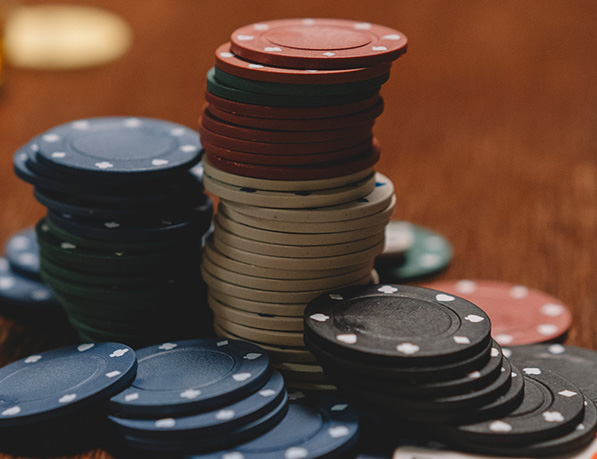
In Big O, all betting is limited by the size of the pot. For example, if there is $50 in the pot on the flop, the most the first player can bet is $50. If a player does bet $50, the remaining players can raise up to the size of the pot.
In this case, the pot is calculated by first adding the value of a call to the pot and then adding the remaining pot on top of that. In this example, the next player could raise another $150 ($50 pot + $50 bet + $50 call) to a total of $200.
This is an important detail to remember when contemplating equity and pot odds.
Explaining the Low Hand in Big O Poker
As previously mentioned, Big O is a hi-lo game, which means one portion of the pot goes to the best high hand, and one portion goes to the best low hand.
The high hand is determined in accordance with the standardized poker hand ranking charts, which are the same in games like Texas Hold’em Poker or Seven Card Stud.
However, the low part of the hand is a bit more abstract and many novice poker players don’t quite understand it.
The most important thing you need to know is that a low hand can only be made of five unpaired cards that are no higher than an eight.
The lower your cards are, the better they are in terms of low, as 5432A is the best possible low hand, while a hand like 87654 would still qualify as a low.
When low hands are compared, the highest card is looked at first. For example, 7d6s5d4c2d would beat 8d4c3s2cAd because the highest card in the first hand is lower than the highest card in the second hand. If the top cards are the same, the next card is compared, etc.
At showdown, the pot is only split into two parts if there is a qualifying low hand. These parts can also be split further if two players have the exact same holdings for either the high or the low part of the pot.
Big O Poker Hand Example
The best way to explain a poker game is to show you an example, so we are going to run through a hand of $1/2 Big O poker with $500 effective stacks and six players at the table.
With blinds at $1/2, you look down at AsAdKsJd2c in early position, a very strong starting hand when thinking about Big O poker ranges, and you raise it up to the pot size, which is $7 in this case.
The dealer button, the small blind, and the big blind all call, and you go to a flop. Your hand contains two nut flush draws, two low cards, and plenty of potential for a high straight, making it one of the best starting hands you can have in this game.
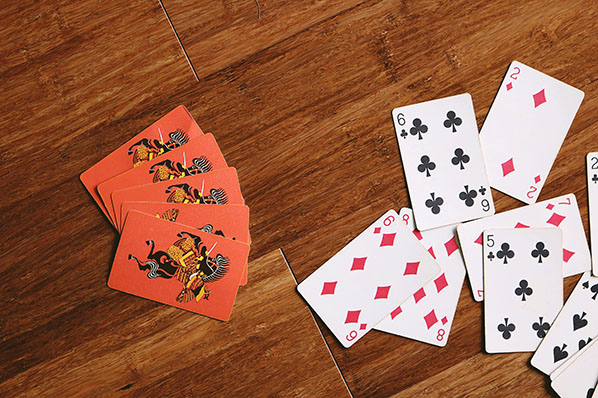
The flop is 9d4d3s, giving you the nut flush draw, the nut low draw, and a gutshot straight draw, and plenty of ways to win both the high and the low part of the pot.
The small and big blind check to you, and with $28 in the pot, you decide to bet the full pot and put everyone else to the test.
The dealer button quickly folds his cards, but both the small blind and big blind call, swelling the pot to $112 and leaving you drawing to the nuts each way.
The turn card is the 7s, giving you the nut low, as well as another flush draw to go with your diamonds. When both players check to you, you bet the full pot again, which forces your opponents to make some difficult decisions if they have hands that play only one way or a weaker low than yours.
The player in the small blind decides to fold, but the player in the big blind makes the call, and you go to the river.
The river card is the Qs, giving you the backdoor flush and the best possible hand for both the high and the low. Your opponent checks, and with $336 in the pot, you now decide to go for a $150 bet, trying to get some value.
Your opponent reveals that he had a set of fours and a weaker diamond draw on the flop and folds his cards face up, allowing you to scoop the pot.
In this particular case, your As2c combo was good enough to give you the best possible low hand, while your AsKs combo helped you ensure you would win the high portion of the pot as well.
The real trick to playing Big O is to try and play many hands that have a good potential for winning both parts of the pot while avoiding playing hands that don’t have good low potential or the best possible draws for the high end.
Big O Poker Strategy Tips
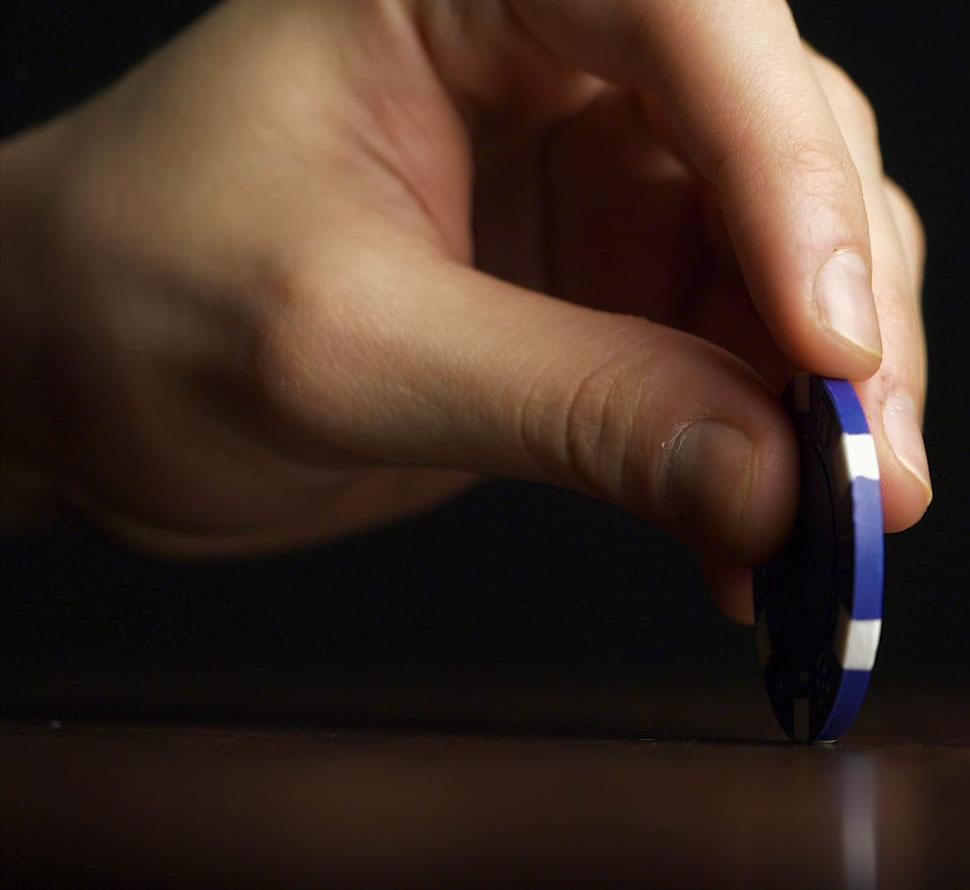
Big O is one of the most exciting poker games out there. The five hole cards tend to create a lot of action, while the hi-lo aspect of the game makes for some interesting postlop decision-making.
If you are transitioning from Texas Hold’em or regular PLO, playing Big O poker will take some adjustments, especially in terms of poker strategy.
Here are a few simple but important Big O strategy tips that you should keep in mind when you play your first Big O session.
Tip #1. Choose Your Starting Hands Carefully
The starting hand selection is a stumbling stone for many novice Big O players, as any five cards can appear good enough to an inexperienced eye.
In reality, you should only be playing hands that can win both the Hi and the Lo portion of the pot in Big O poker, and that means patience is often a key element of the game.
The two key cards in this game are the Ace and the Deuce, and having at least one of these two makes for a pretty good starting hand in Big O poker.
Ideally, you want to play hands that have both an Ace and a Deuce in them, along with some other connected and suited cards to go along with them.
A hand like As5s4c3c2h can go a long way in Big O, as can a hand like AcKcKh5h2c. Both of these hands have plenty of potential ways to win both the Hi and the Lo.
On the other hand, if you are dealt something like JsJc9s7c6h, you should usually not get involved in the first place, as a hand like that has very little chance of scooping the pot and will struggle to win even the Hi, let alone the Lo.
Tip #2. Position is Key
Position is one of the most important strategic elements in any poker game, and it’s even more important in Big O poker.
Playing too many hands from early positions will get you into trouble and put you in too many uncomfortable spots that you simply don’t want to be in.
On the other hand, if you make sure you are playing more hands from the button and the cutoff than all other positions, you will gain an edge over the rest of the field.
If you are playing in a splashy Big O game where pots often go multi-way, making sure you have a position more often than not is the biggest upside you can give yourself while going for maximum value and pressure by 3-betting your strongest hands very large..
Tip #3. Be Aggressive with Your Draws
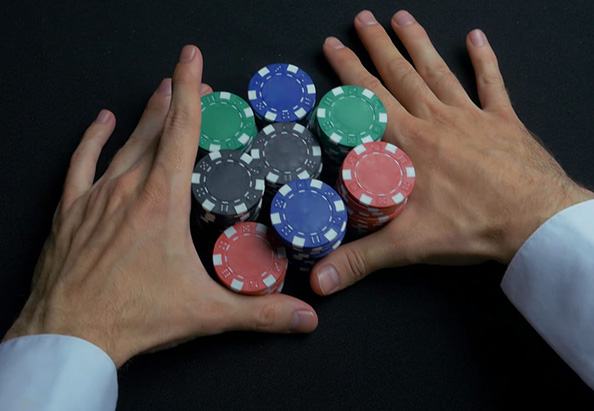
Big O is all about the big draws, as the best hand on the flop will rarely scoop the pot, considering all the options for Hi and Lo cards that can change the situation on later streets.
Getting aggressive on the flop can often help you win pots on later streets, whether you make your draws or not. For this reason, aggression is the name of the game in Big O.
For example, if you have a draw to the nut Lo and a draw to the nut flush on the flop, you should be betting out or check-raising your opponents heavily.
Even when they do decide to call and see further cards, you have plenty of chances to improve and can use other cards to your advantage to bluff and make your opponents fold a better hand.
Big O Poker Summary
Big O Poker is one of the more complex and exciting poker variations, but one that can be overwhelming for new poker players.
If you haven’t played any Omaha games in the past, jumping into Big O can be a bit scary, so make sure to start at low stakes and build your way up gradually.
Playing poker with five cards is not easy, but once you master all the nuances of Big O, you will be able to gain a substantial edge over other players.
Start by mastering the basic rules of Big O and get some experience playing the game at the lowest stakes you can find to get the much-needed experience.
Big O Poker FAQs
What is Big O poker?
Also known as Five Card Pot Limit Omaha Hi/Lo, Big O poker is an exciting Omaha poker variant that’s played with five starting cards and with the Hi/Lo rule in play.
How many hole cards do I get in Big O poker?
Each player gets five hole cards to start a hand of Big O poker. Five further community cards are dealt on the table, which all players can use to make their best Hi and Lo hands.
How much can I bet in Big O?
All betting in Big O is limited by the size of the pot. You can start by betting the pot, and all subsequent players can raise up to the new size of the pot, which includes their call.
How does the Hi/Lo rule work in Big O?
Each pot in Big O is split between a Hi and a Lo hand. The Hi hand is determined in accordance with the standard poker hand rankings, while the Lo hand is the best hand made up of cards below a Nine that does not contain any pairs.
What Big O starting hands should I play?
Ideally, you want to start with hands that have an Ace and a low card, such as a Deuce or a Trey in them. Furthermore, having suited and connected cards work in your favor while having disjointed and offsuit cards makes a Big O hand not worth playing.


